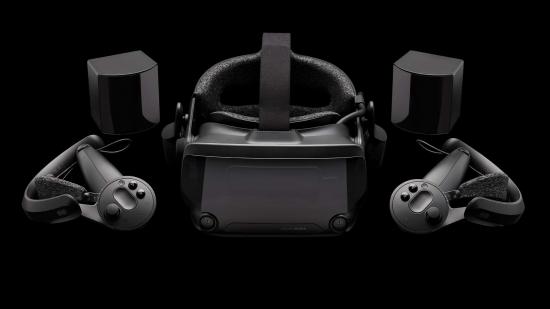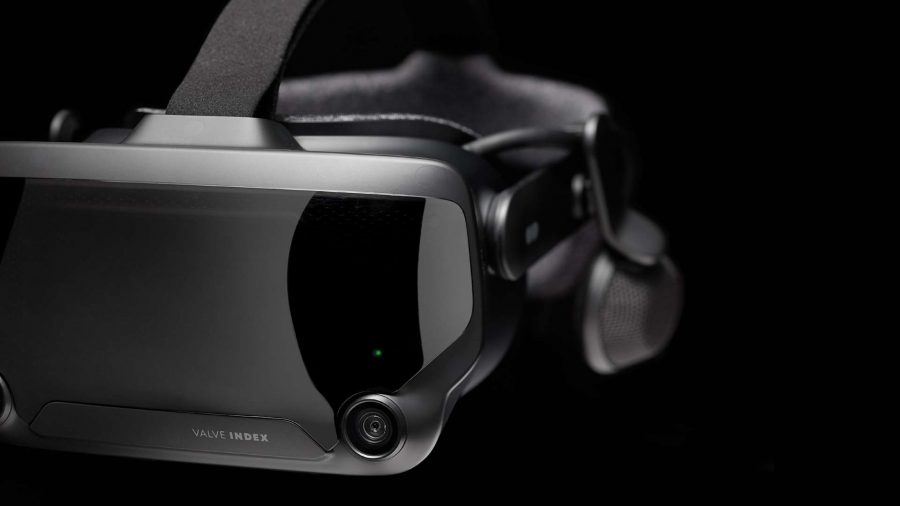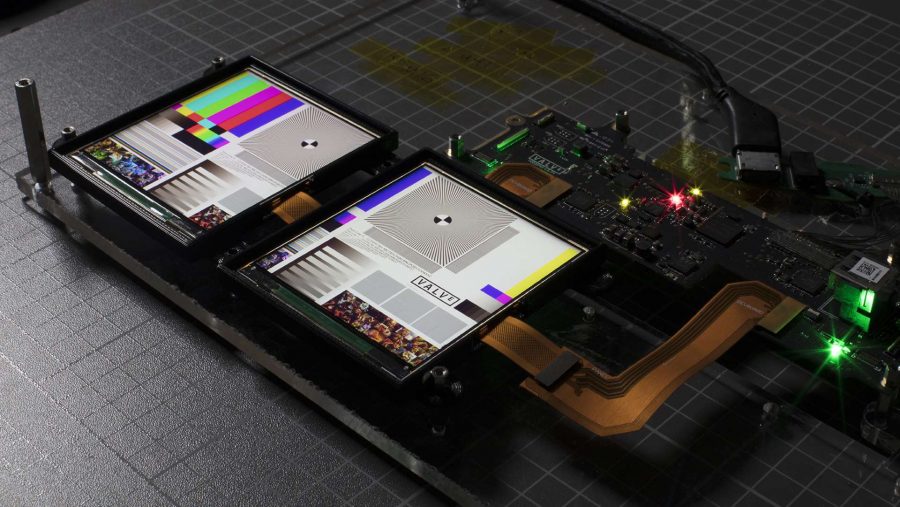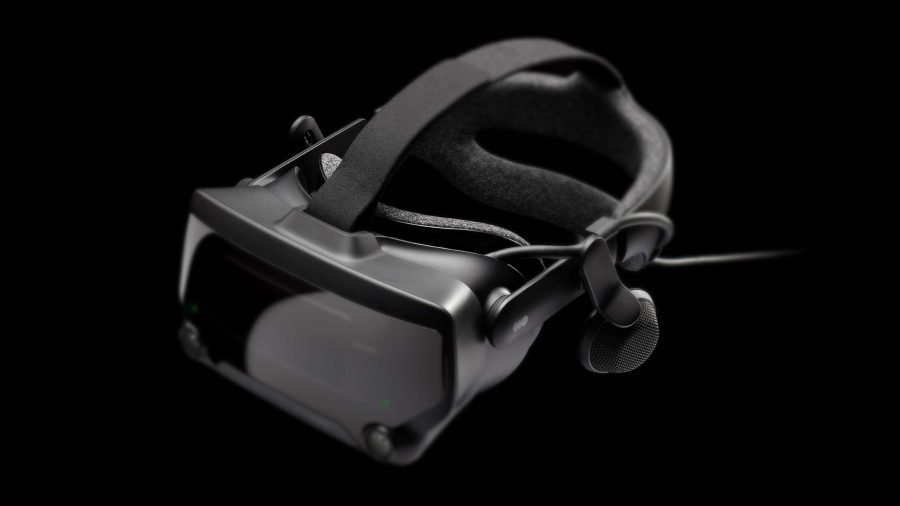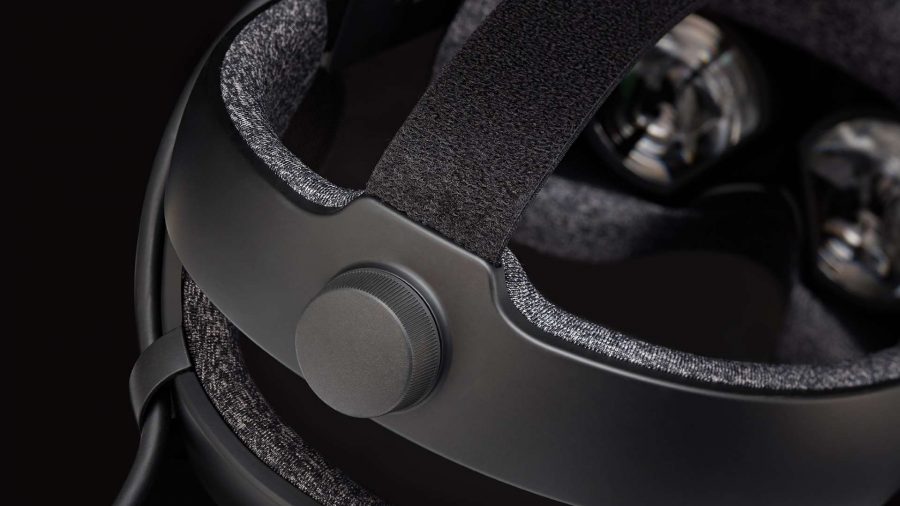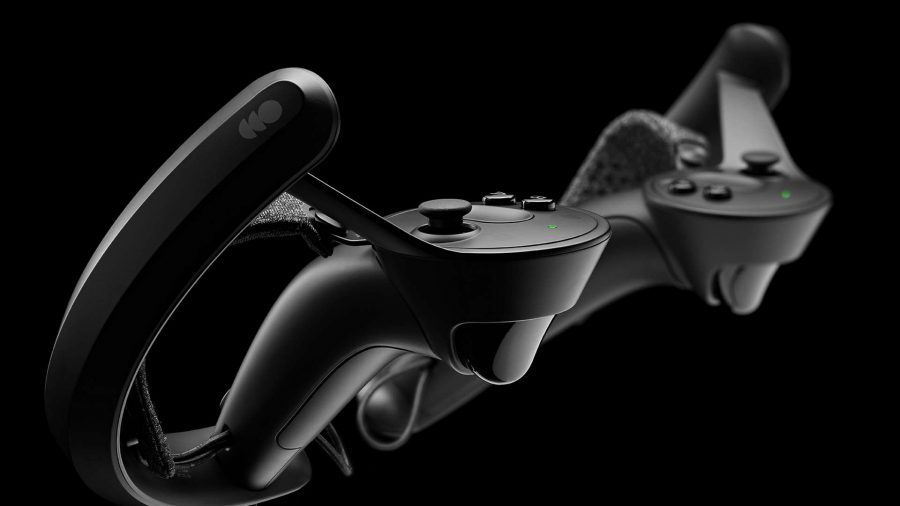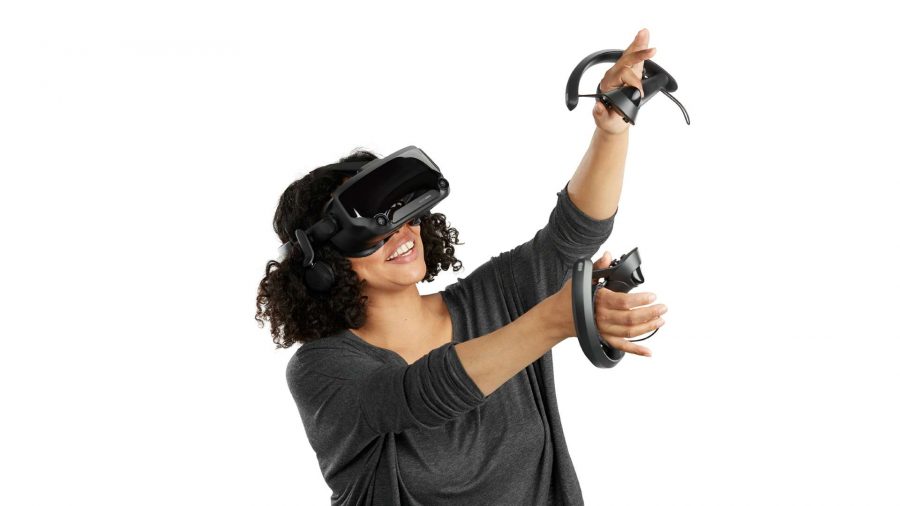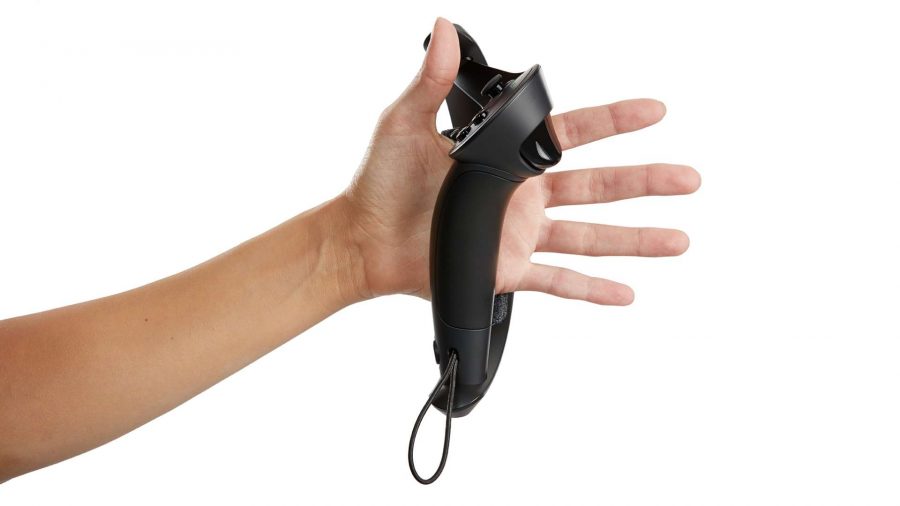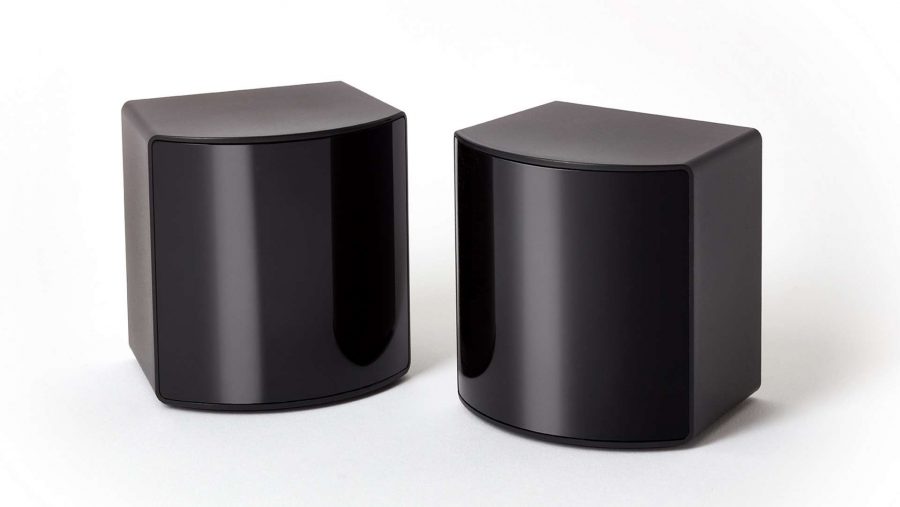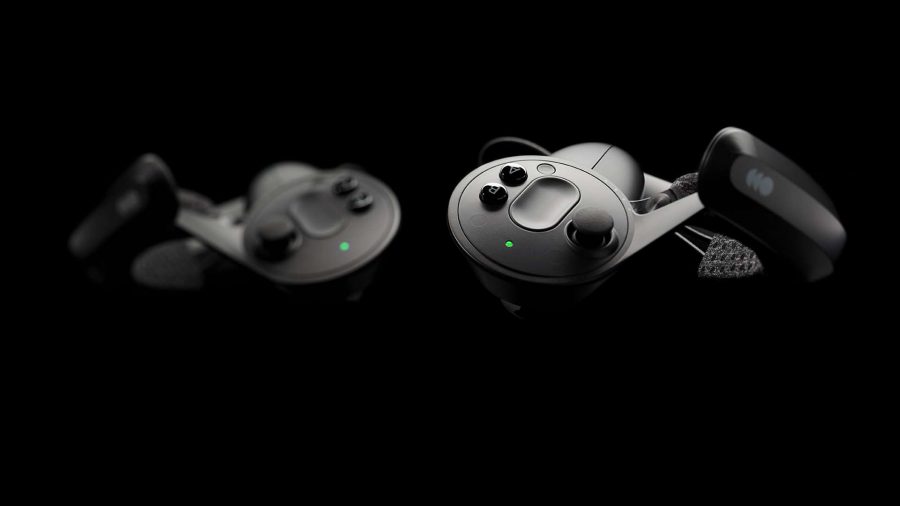Our Verdict
The best consumer VR kit available. The Index may be a pretty penny as modern virtual reality sets go, but with the improved visuals and stunning audio, as well as those fancy new controllers, this is as close to next-gen as you're going to get right now.
The new Valve Index virtual reality system is here. It’s here in our hands, on our heads, around our ears, and all-told it makes for simply the best consumer VR setup around. With a host of improvements over the previous standard of headsets and controllers it’s a hugely impressive engineering feat. But does the Valve Index really represent the true next generation of virtual reality? I’d maybe argue not quite, but no other virtual reality setup I’ve used gets as close to providing a genuine next-gen VR experience as the Index.
Since our initial preview test we’ve had a lot of time to play with the new headset and controllers, and it’s an incredibly impressive bit of kit, for many reasons. Some very obvious, like the high-fidelity new displays, and some that have come completely out of left field… Seriously the audio tech on the Index is incredible, and has to be heard to be believed.
But before we get into the actual experience of strapping into the sharper world of the Index, let’s spend some time talking about what’s actually in the package as a whole.
The Valve Index kit consists of three main things, the first and most obvious being the Index headset itself. Then you’ve got the smart new Index controllers, possibly the twin stars of the show here, and then finally you’ve got the Base Station 2.0 human position trackers. Each of them can be picked up individually, but it’s the complete set which delivers the full Index experience. Though admittedly that is mighty pricey at $999 (£919)…
Valve Index headset
The first thing you’ll notice is that the Index headset comes with a higher overall resolution than the original Vive, matching the dual 1440 x 1600 per eye resolution of the Vive Pro. But it’s not just about the resolution itself as Valve is also making a lot of noise about the overall fidelity of the RGB LCD screens, promising 50% more subpixels than the AMOLED screens used in the Vive. That ought to offer greater sharpness for the same rendering load, and also helps cut down the dreaded screen door effect too.
| Valve Index Headset | |
| Display | Dual RGB LCD |
| Resolution | 1440 x 1600 per eye |
| Refresh rate | 80/90/120/144Hz |
| FoV | 130° |
| Audio response | 40Hz – 24,000Hz |
| Cameras | Stereo 960 x 960 |
| Price | $499 | £459 |
The twin displays also offer more varied refresh rates too, delivering 80Hz, 90Hz, and 120Hz operation, and with a more-experimental 144Hz mode available too. If your machine has the GPU cojones to keep up that is.
Those screens are only one part of the complete equation though; the optics also play a major role in the overall fidelity of the final image. The updated optics allow for a greater field of view, typically 20° more than the Vive, which puts it at around 130°. The lenses themselves have also been designed with what Valve calls “high geometric stability” – basically that means the image doesn’t get quite so distorted at the edges of the lens so you’re more able to look around a scene without necessarily having to move your head.
And the work Valve’s engineers have put in getting the visuals right has all been worth it. The image looks sharper, cleaner, and clearer and, with the screen door effect all but relegated to single-storey farmhouses in the Midwest again, it’s now a lot easier to spend time in VR. It’s no longer as visually fatiguing to have a pair of screens set just off the tip of your nose, and that means you’re not longing to rip the headset off and sit in a darkened room after a mere five minutes of virtual funs.
The higher refresh rates helps with all of that too, with the 120Hz mode offering a level of motion that’s just that little bit more fluid than the standard 90Hz we’ve become accustomed to. The caveat here is that, even with a RTX 2080 in the Razer Blade 15 laptop we tested with, there were times at 120Hz where Steam VR was having to do some motion smoothing to cope, which can make things a little smeary.
The higher res, and improved screen and optics, aren’t necessarily revolutionary – it’s not like you’re suddenly looking at a photorealistic world – but the enhancements do make a big difference.
But what about the things you can’t see? Audio is something that’s often overlooked and underestimated in gaming, and not just in VR. On the surface it looked kinda like Valve was guilty of that here too. Those strapped-on headphones were not filling me with any confidence about the aural experience of the Index.
But I’ve rarely been more wrong…
At first glance they seem a lot like the ones the Rift has been using for a long time, and even the Vive Pro too, but these have been designed not to sit actually on your ears. They sit a little way off your lugholes, supposedly allowing the sound to “freely flow and interact with the geometry of your own head and ears.” Valve also says it’s been designed so the audio doesn’t feel quite so closed inside your head and comes from around you. Though a good headset should do that anyways… hence the welcome addition of a 3.5mm audio jack buried under the detachable visor.
Heard that: These are the best gaming headsets around today
I was super sceptical about how good such supposed free-floating earspeakers could really be, but honestly, they’ve blown me away. When the headset is on the audio is fired directly into your ears in a way that drowns out a huge amount of the ambient noise of the room you’re in, and yet still seems as though it’s coming from all around you.
The positional cues are impressive and it’s almost as if Valve has used some binaural audio voodoo to trick both your ears and your brain. It’s tough to describe, but is far better than any VR audio I’ve ever experienced. And because it’s not actively attached to your ears you don’t get anywhere near as hot during a serious Beat Saber session.
One of the other unsung features of the new Valve headset is that it’s been built with PC gaming nerds like me in mind. I’m lucky in that I do often wear contact lens, but as a man with a rapidly deteriorating set of eyes I also spend a long time wearing glasses. That’s normally a big no-no for VR, but the Index manages to have enough space inside to allow the user to comfortably game in glasses.
Maybe the slight extra bulk on the front is what makes it feel a little less well-balanced than the Vive Pro did, as it does feel a touch front-heavy on occasions. But as a whole the headset is a lot easier to put on now, and the twist mechanism first used in the Vive’s Deluxe Audio Strap is again used to good effect with the Index.
But the main reason I still regard the Valve Index as maybe generation 1.5 of VR is because of its use of a wired connection. So no, we still don’t have a proper wireless VR headset, with the cable-free system built in from the off.
Though at the recent Index launch party Valve’s head honcho, Gabe Newell himself, hinted at a future version of the Index that goes untethered.
“We are looking at several methods of doing untethered Index,” says Newell, “we have a lot of ideas for kind of revolutionary things to do with the display and optical technology.”
So it’s not off the table for the next set of Indices… that’s Gabe’s personal favourite pluralised form for the Index, by the way. But Valve has at least shifted away from HDMI to DisplayPort, though Valve will sell you a VR Link adapter for your Nvidia RTX cards.
That shouldn’t be a massive issue, but does mean that a lot of gaming laptops, with only a HDMI port to speak of, will inevitably be cut from this entry of virtual reality. It also means all those machines that specifically incorporated a HDMI pass-through for VR become useless, as do those weird VR backpack PCs too.
But then, those were always kinda useless.
I’ve been using that slinky Razer Blade laptop, which comes packed with an Nvidia RTX 2080, and also comes with a mini-DisplayPort connection. I’ve been using a pretty standard adapter, and it’s been fine. Though there is a part of me that finds it a little frustrating that when the VR ecosystem desperately needs to have broader appeal, the number of compatible devices is actively shrinking.
The Oculus Rift S is doing the same thing, however, so Valve isn’t alone in making the switch to the superior display connection tech. Though at least the Rift S does actually ship with a mini-DisplayPort adapter…
Valve Index Controllers
To be honest, the new Index controllers are arguably the most exciting part of the whole package. They’re a pair of controllers that offer complete freedom of movement, and total tracking too. Yes, they can track individual finger movement, down to the knuckle. Hence the Knuckles nickname for the controllers.
| Valve Index Controllers | |
| Connection | USB-C, 2.4GHz wireless |
| Battery | 1100mAh Li-Ion |
| Battery life | 7+ hours |
| Haptics | HD LRA |
| Price | $279 | £259 |
You can probably imagine what the first finger-based gesture most people will test the Index controllers with, and it will only involve a single finger. And yes, I did spend a good amount of time flipping off various VR NPCs to no greater effect than to amuse myself. Though some games do recognise when you’re being particularly rude…
The smart part about them, aside from the 87 different sensors built into each of the controllers, is that they’re designed to be used open-handed as well as gripped. The strap on the grip can be pulled tight so that the controller will stay put when you relax your fingers. What this means is that you don’t have to spend your entire session holding onto the controller like grim death, and also allows you greater freedom to interact with your virtual world.
Because the sensors are tracking your finger movement gripping, interacting, and throwing objects has a higher level of fidelity. Picking something up doesn’t have to just be about pressing a trigger button, but can simply be a matter of closing your grip a little. From what I’ve played so far it’s not exactly revolutionary yet, there still isn’t the finegrain control of picking something up with thumb and forefinger, but it’s a definite step in the right direction.
But those 87 controller sensors aren’t just about movement. Of course they cover hand and finger position and motion, but they’re also there to measure pressure. Valve, somewhat menacingly, says that this “introduces new interactions like squeezing and crushing.” The Index controllers can measure how hard you’re squeezing the grip, allowing for a more analogue style of manipulation. You could just lift something delicate into the air, or crush it in your fist.
Of course this depends on developers actually using the technology, but the extra level of interaction could become incredibly immersive, and many devs are working to add support to their existing VR titles in time for the eventual launch of the Index later this year.
Virtual Insanity: The best VR games on PC
We’ve had a play with the Knuckles beta branch of zombie shooter, Arizona Sunshine, and the Moondust demo, where you play some sort of space monster seemingly pivoting between terrorising and aiding a lunar station.

Both show off the Index controllers well, but the all-too-short Aperture Hand Lab experience was the best, both in terms of surfacing the power of the controllers but also in that it has that Valve touch to it.
Makes me rather sad it doesn’t really make games these days…
Base Stations 2.0
Finally, we come to the new Base Stations 2.0. While it is possible to use the original Vive base stations with the Index, the version 2.0 devices offer support for a play area that’s 400% bigger than you can achieve with the old school options. The new base stations have an improved range of 7m and a maximum play area of 10m x 10m, so long as you add another pair into the mix anyway.
| Base Stations 2.0 | |
| Range | 7m |
| FoV | 160° x 115° |
| Max playspace | 10m x 10m |
| Price | $149 | £139 |
They’re also more accurate, in order to be able to fully realise the extra motion the controllers afford you. To that end each base station has fixed lasers which will sweep the room 100 times every second, and will do so with sub-millimetre precision to capture every gesture.
Sub-millimeter. Smaller than a millimetre. That’s frickin’ precise.
And they do indeed seem very precise. Even with the kit set up in the office and people trying to induce vomiting by standing in front of one of the sensors while I thrashed about in VR the tracking seemed strong. I had a few issues at home, however, where sometimes the tracking on either the controller or headset would skip for a second. That’s incredibly jarring when it throws you around the world for a split second, and not just immersion-breaking but stomach churning too.

Click here for more hardware goodness delivered to your eyeballs
After my time with the Valve Index I am mighty impressed with even its early performance. Obviously Valve is too given that it chose to offer early previews out to the press at least a month prior to launch. There were a few teething issues, but some are already gone and I can see a lot of the rest being patched out in the near future.
The ones that can’t be, however, are the issues that stop the Index from a true next-gen VR experience. For that it needs to be fully wireless and it needs to have a form of inside-out tracking that means you no longer need those base stations. I know I’m asking a lot from within the current constraints of both pricing and technology, but that’s got to be the goal for virtual reality makers right now.
The Oculus Rift S has taken care of part of that equation, and the Vive Pro with its wireless add-on the other. But neither offer a package as compelling as the Valve Index. As it is the Index still requires a bit of effort to set up, especially for the likely short time you’re going to be playing with it. That playtime has though potentially been lengthened by the extra comfort levels and engagement afforded by the headset improvements and the impressive controllers.
And then there’s that price. Around $1,000 is a lot to ask for VR when the competition is offering something for less than half the price, and the success of the Index is going to be down to how many hardcore VR fans are going to indulge themselves regardless. I’m not sure how many of the VR-curious will take a punt on it.
But as someone who’s had a VR set growing dusty for years on the shelf next to my big rig gaming PC, the fact that the Valve Index is genuinely making me itchy to get back into virtual reality and play. The visuals are better, the audio is excellent, the controllers superb, and the overall comfort levels unprecedented.
This is as close as you’re going to get to true next-gen VR… until the Valve Index 2.0 release.
